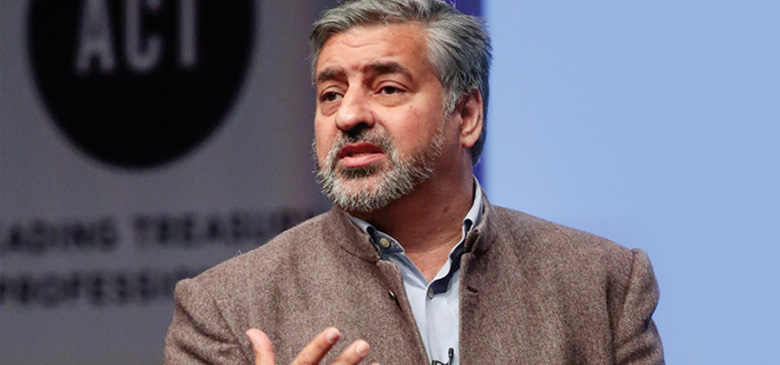
We’re in an interesting time where everyone’s hearing about digital transformation and thinks they need to get involved. But what’s going on in organisations isn’t quite matching the hype that’s emanating from the marketplace.
Firms are trying to make the necessary shifts, but they’re not moving at the pace of the hype.
There are several issues. First, less than 1% of people on the planet understand the technologies accelerating towards us and transforming our world – tools such as artificial intelligence (AI) and blockchain are a complete mystery.
So, there’s a massive learning curve from where organisations are to where they need to be to make the technology work. And that gap isn’t closing. As a result, firms are faltering in their digital transformation efforts.
We must teach people to be super proficient with our tools and technologies, and develop their curiosity about what’s coming, too
Analysts suggest that 60-80% of digital transformation efforts are stalling or failing.
Then we have macro-level data from around the world showing that, in the past 30 years, corporate investment in IT has had zero impact on productivity. Other numbers indicate that around $800bn per year is wasted on IT projects.
IT projects are going wrong, and most of that is down to poor digital literacy – plus, a reluctance to change business, process and organisational models to take advantage of what new technologies can do.
In addition, the need for speed is driving businesses into project overload. Hence, things we should be doing to make things better are taking far longer because resources are spread too thinly.
How do we overcome these barriers? Well, to sharpen our focus we must plan along three different timelines…
We must understand our customers and our people in a way we never have before.
This means entering into deep customer dialogue about how they see the future and the challenges and opportunities ahead. How do they see their businesses and needs changing? Where are we serving them well – and letting them down – today?
For our staff, we have to start with investment in digital literacy. That means teaching people to be super proficient with our tools and technologies, and developing their curiosity about what’s coming, too.
I encourage everyone to take a free, online course from Finland called The Elements of AI. It teaches the basics, and for 90% of people on the planet, that’s all they’ll need.
For a greater perspective we encourage daily viewing of short training videos on broader developments shaping the future, which can be found at websites such as Cheddar, Futurism and the World Economic Forum.
With running times between 30 seconds and three minutes, these videos get across key messages about what’s changing, the business impact and what it all means for individuals.
We encourage teams to watch videos on a different theme or topic every week – such as the future of money, travel or healthcare – then discuss what they’ve learned about the implications for their lives and work.
If you’re investing in your people’s digital literacy and have a strong understanding of your customer, then you can really let rip with key digital change projects and experiments.
By concentrating on a vital few at any one time, you will be able to move with greater focus and speed. There’s a myth that if we don’t prioritise, then somehow everything will get done. But that’s nonsense.
If leaders don’t prioritise, then our staff will, in the decisions they make as to how and where to spend their time.
Prioritisation will free up employees to carry out the work, and will avert the risk of them just going from one meeting to another and never making any progress on anything.
The key here is short, focused projects delivered while the opportunity or need is still valid, and avoiding extended, multi-year developments.
Scan the horizon for trends, developments and emerging technologies that could shape our environment, and envisage scenarios depicting how they could play out.
The insights gleaned from those scenarios will drive the changes we make over the next one to three years to ensure we are forward-thinking enough, agile enough and have the flexibility of thinking to respond, no matter what shape the future takes.
Key to this is building capability for the longer term, not just current needs.
Investment in project management skills empowers people to deliver the massive changes that emerging technologies will usher in – capabilities that will ensure firms save hundreds of millions of dollars, rather than wasting them on misguided transformations.
Throughout this process, we must open up time and headspace to tackle critical questions such as:
Another important point is that we’re driving our organisations at an unsustainable level of stress.
We’re piling ever greater pressure on people, and the 2017 Thriving at Work report revealed that 300,000 UK workers per year quit work over mental health problems.
So we need to invest in people, make well-informed decisions and set clear priorities, so you can say to your staff: “In a complex and uncertain world, here’s the certainty we can give you about the next steps.”
We can say that we don’t know exactly what the longer-term future is, but we’re building the platform for various versions of it – and we’ll keep learning and adapting. That’s how we’ll stay fresh and focused on the future.
Rohit Talwar is a global futurist and CEO of Fast Future
This article was taken from the 40 Years Edition 2019 issue of The Treasurer magazine. For more great insights, log in to view the full issue or sign up for eAffiliate membership
